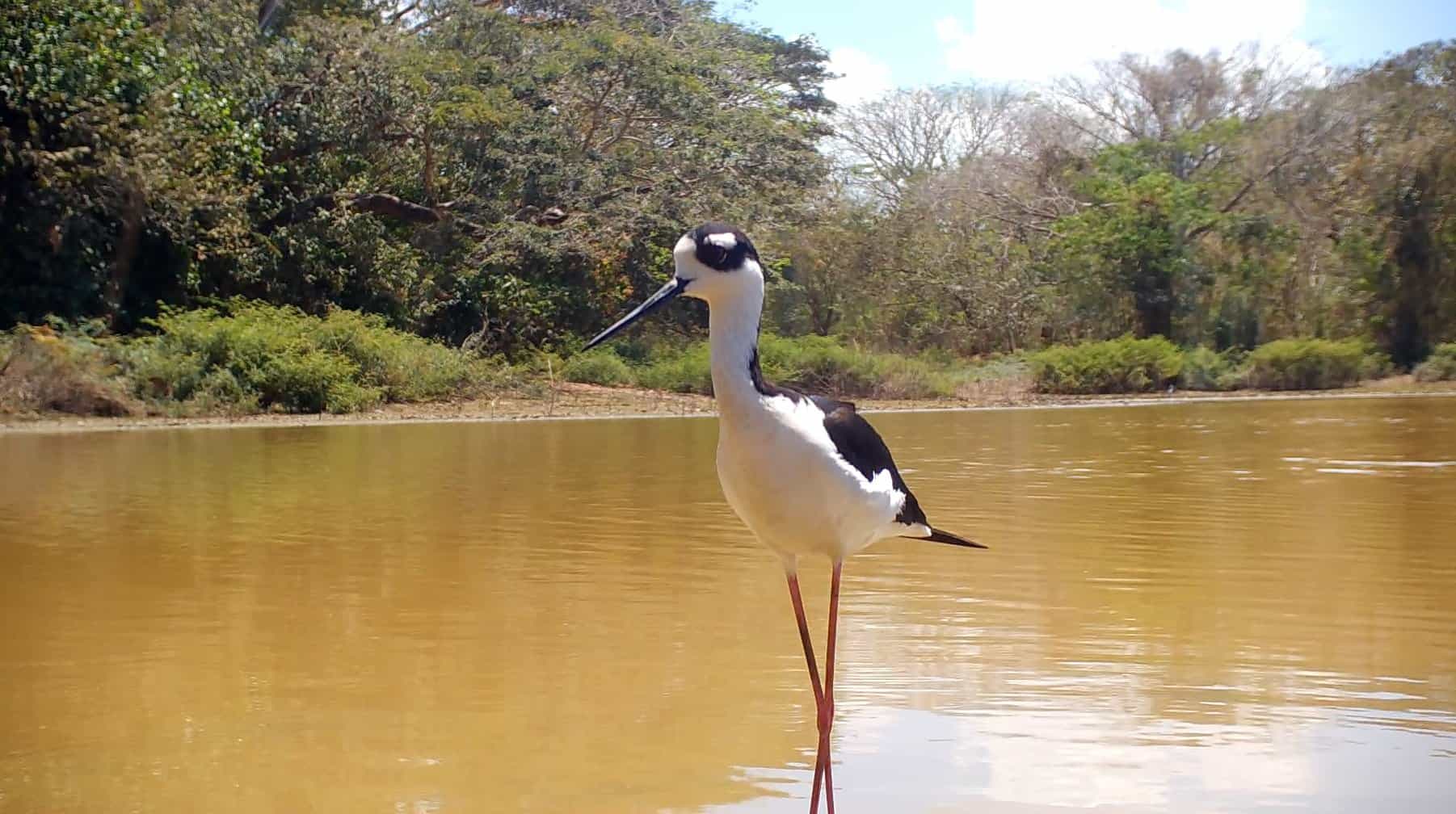Today’s featured bird is the black-necked stilt, a delicate little waterbird with extremely long legs that’s famous for its popcorn.The black-necked stilt (Himantopus mexicanus) is known as the cigüeñela cuellinegro or soldadito in Spanish. I prefer soldadito, which translates to little soldier for two reasons. First, these birds do in fact resemble little soldiers in black and white uniforms standing tall at attention. Second, cigüeñela cuellinegro look like two words that I have very little chance of pronouncing correctly successively without looking at them spelled out and pronouncing them weirdly slow.
The black-necked stilt is a small-bodied wading bird that is dwarfed by many of the larger storks and herons it shares its habitat with. What makes it stand out are the two incredibly long red legs that its little body is perched on. Perfectly suited for wading through shallow water, the black-necked stilts legs are the second longest in proportion to their bodies of any bird, exceeded only by flamingos.
Their long, extremely skinny legs coupled with their needle-like thin beak bring the word ‘delicate’ to mind when I see them. I’ve seen other folks opt for ‘elegant’ or ‘stately’ to describe them. I think all of those adjectives together nicely convey the look of the black-necked stilt.
Black-necked stilts’ long legs carry them through both fresh and saltwater environments. They prow the muddy edges of ponds, lagoons, tidal flats, and estuaries probing the soft bottom with their long, sharp beaks in search of small aquatic insects, mollusks, crustaceans, small fish, and tadpoles. In Costa Rica, permanent resident black-necked stilts, which are particularly common in the Tempisque basin of Guanacaste, are joined by migrant black-necked stilts from the north from October to May.
These stately little birds gather in small groups to forage and make nests and they’re not at all above making a racket. If a person is out checking camera traps for example and they were to venture too near a foraging group, they’d be treated to a serenade of incessant yipping. If one were to approach an area where they’re nesting, those yips could be accompanied by a broken wing display, where an adult pretends to have a broken wing and leads the intruder away from the nest site.
On top of that, black-necked stilts are famous for their popcorn display where an entire group of adults alternately hop up and down while flapping their wings and yipping loudly, again in hopes of distracting a potentially dangerous predator and saving their eggs or hatchlings.
I see black-necked stilts in the wilds of Guanacaste whenever I’m working in suitable habitat. I’ve noticed I only see them in very open wetland habitats, never in any areas with significant forest around. My favorite method for recording them with my camera traps is to drive a stake into the soft, muddy banks of the ponds or lakes that they inhabit and attach my camera traps to the stake at water level. With luck, this method allows us to get an eye level view of these delicate little birds.
About the Author
Vincent Losasso, founder of Guanacaste Wildlife Monitoring, is a biologist who works with camera traps throughout Costa Rica. Learn more about his projects on facebook or instagram. You can also email him at: vincent@guanacastewildlifemonitoring.com

